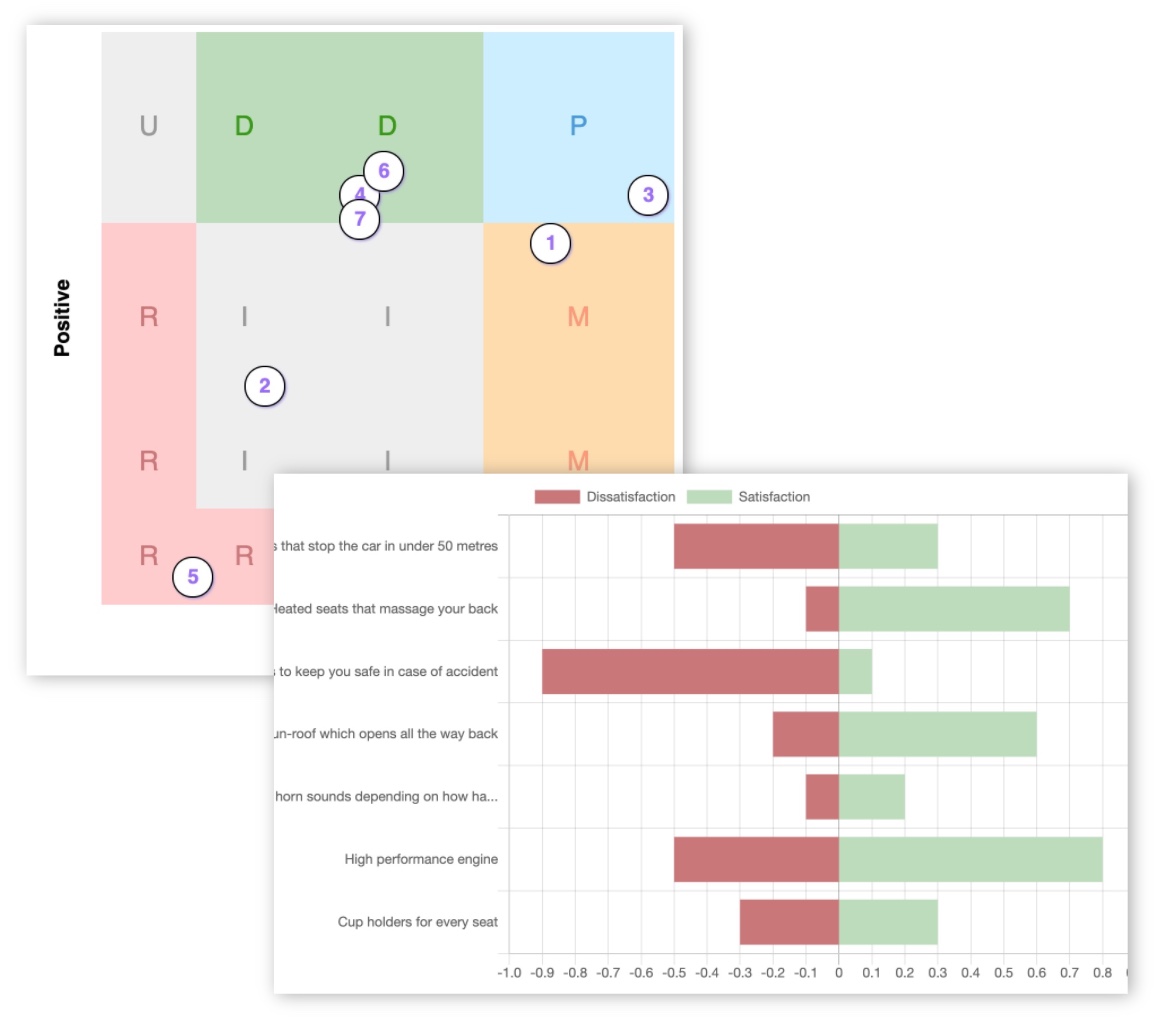How the Kano Model Can Enhance the Voice of the Customer in Six Sigma

The Kano model is a technique used in product development and management to understand customer needs and satisfaction. It is based on the idea that customer satisfaction is not always directly related to the quality or performance of a product, but rather a combination of factors including the presence or absence of certain features, the performance of those features, and how well they match the customer's expectations.
Six Sigma is a quality management methodology that is used to improve processes and reduce defects. It is based on the idea of measuring the number of defects in a process and using statistical analysis to identify the root causes of those defects in order to eliminate them. Six Sigma uses a set of tools and techniques to define, measure, analyze, improve, and control processes in order to achieve near-perfect quality.
Our Kano model platform can be used in conjunction with the Six Sigma methodology to improve the quality and customer satisfaction of a product or service. By understanding the customer's needs and expectations, the Kano model can help to identify the must-have, performance, and delighter features of a product. This information can then be used to define the quality goals and objectives for the product or service in the Six Sigma methodology.
For example, let's say a company is developing a new smartphone...
Using the Kano model, they identify the must-have features of the smartphone as:
- a reliable processor
- a high-resolution screen
- and a long-lasting battery.
They also identify performance features such as:
- a fast charging capability
- and a high-resolution camera
As well as delighter features such as:
- a waterproof design
- and a built-in fingerprint scanner.
With this information, the company can then use the Six Sigma methodology to define the quality goals for the smartphone. Thinking about the Must-have features: they might set a goal to have a maximum of 3 defects per million units for the processor, a maximum of 2 defects per million units for the screen, and a maximum of 1 defect per million units for the battery. These goals would be measured, analyzed, and improved using the tools and techniques of Six Sigma in order to achieve near-perfect quality and thereby meet the must-have requirements for customer satisfaction.
In summary, the Kano model can be used in conjunction with the Six Sigma methodology to improve the quality and customer satisfaction of a product or service. By understanding the customer's needs and expectations, the Kano model can help to identify the key features of a product and define the quality goals for those features in the Six Sigma methodology. This can lead to more effective product development and management, and ultimately, greater customer satisfaction.
Voice of the Customer
A Six Sigma practitioner can use the Kano model when thinking about the Voice of the Customer (VOC) by using it as a framework for understanding customer needs and satisfaction. The Kano model identifies three categories of product features: must-have, performance, and delighter. By understanding which features fall into which category, a Six Sigma practitioner can better understand the customer's needs and expectations and use that information to improve the quality and customer satisfaction of a product or service.
For example, let's say a company is using the Six Sigma methodology to improve the quality of its SaaS application. Using the Kano model, they identify the must-have features of the application as a user-friendly interface, reliable performance, and data security. They also identify performance features such as fast loading times and the ability to integrate with other applications, as well as delighter features such as personalized recommendations and proactive support.
With this information, the company can then use the Six Sigma methodology to gather and analyze customer feedback and requirements. They can use this information to identify areas where their SaaS application is not meeting the customer's needs and expectations, and then use the tools and techniques of Six Sigma to improve those areas. For example, if customers are reporting slow loading times, the Six Sigma practitioner can use statistical analysis to identify the root causes of the issue and implement improvements to increase the performance of the application.
In addition to using the Kano model to understand customer needs and satisfaction, the Six Sigma practitioner can also use it to prioritize improvement efforts. For example, if the analysis of customer feedback reveals that the must-have features of the application are not meeting the customer's expectations, the Six Sigma practitioner can prioritize those areas for improvement in order to increase customer satisfaction.
Overall, the Kano model can be a valuable tool for a Six Sigma practitioner when thinking about the Voice of the Customer. By providing a framework for understanding customer needs and satisfaction, the Kano model can help a Six Sigma practitioner gather and analyze customer feedback, identify areas for improvement, and prioritize those efforts in order to improve the quality and customer satisfaction of a product or service.
Kano Model surveys are an amazing tool for validating your ideas and your assumptions. Click the button below to get started:
Create your first survey now

 Give Feedback
Give Feedback
